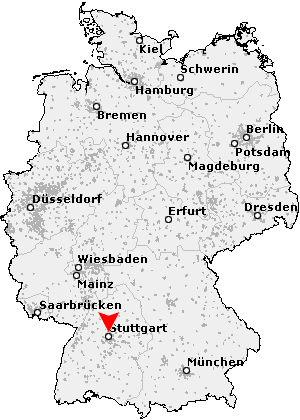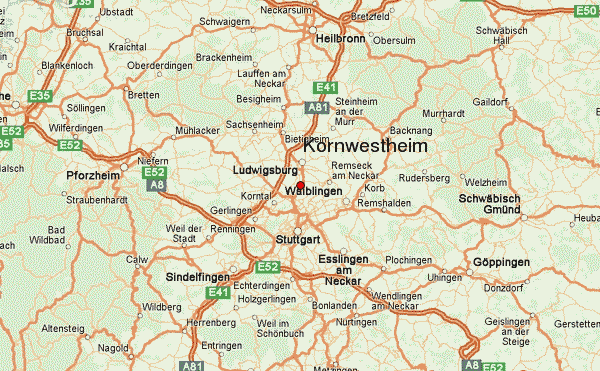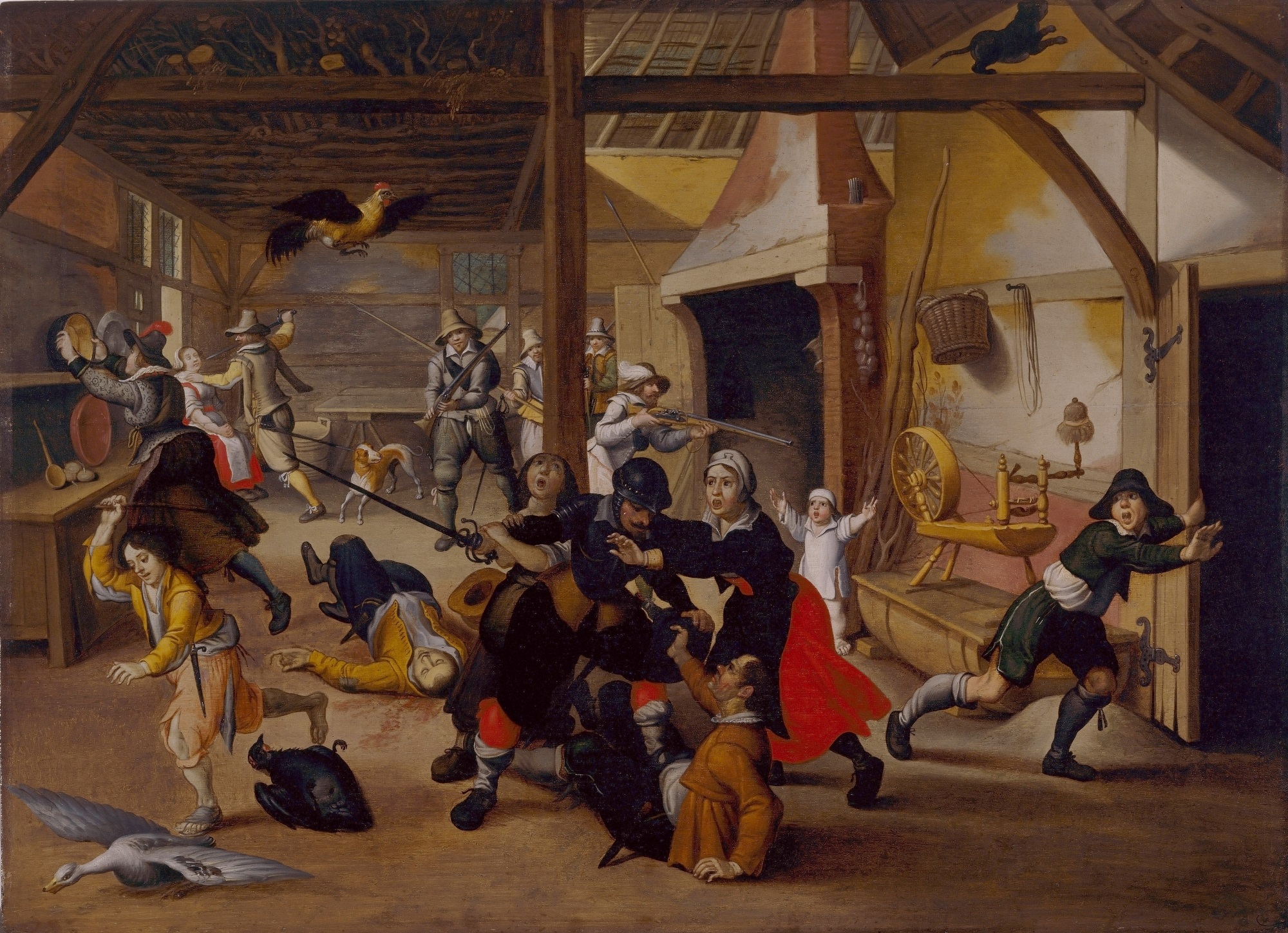You've got to know when and where the oldest Schochenmaiers are to be found. But in such a subtle analysis we need a sort of continuity or so to say a context. Let's map and define the next generation(s) of the Schochenmaiers.
It's interesting to see that the next generation possesses 4 (four) different spelling of our family name! Below I will present the first of them.
Chronologically, the second mention on the oldest known Schochenmaiers refers to Johanna Christina Schochenmajer born on September 19, 1716 in Kornwestheim to Johann Schochenmajer and Anna Maria Schochenmajer.





I can't realize if it too much or not. I am just thinking that there could be a sort of relocation (if two families were related at all!) because of the Thirty Years' War. I quote from Wikipedia:
"The Thirty Years' War (1618–1648) was a series of wars principally fought in Central Europe (primarily present-day Germany), involving most of the European countries. It was one of the most destructive conflicts in European history, and one of the longest continuous wars in modern history.

So great was the devastation brought about by the war that estimates put the reduction of population in the German states at about 25% to 40%. Some regions were affected much more than others. For example, Württemberg lost three-quarters of its population during the war. The male population of the German states was reduced by almost half. Much of the destruction of civilian lives and property was caused by the cruelty and greed of mercenary soldiers. Villages were especially easy prey to the marauding armies. Those that survived, like the small village of Drais near Mainz, would take almost a hundred years to recover. The Swedish armies alone may have destroyed up to 2,000 castles, 18,000 villages and 1,500 towns in Germany, one-third of all German towns.

The war caused serious dislocations to both the economies and populations of central Europe, but may have done no more than seriously exacerbate changes that had begun earlier.
Pestilence of several kinds raged among combatants and civilians in Germany and surrounding lands from 1618 to 1648. Many features of the war spread disease. These included troop movements, the influx of soldiers from foreign countries, and the shifting locations of battle fronts. In addition, the displacement of civilian populations and the overcrowding of refugees into cities led to both disease and famine. Information about numerous epidemics is generally found in local chronicles, such as parish registers and tax records, that are often incomplete and may be exaggerated."
Who knows, maybe our Schochenmaiers had seen something like that with their own eyes...
In the next posting I will take up the question of the oldest Schachenmayrs. Let's compare the most ancient mentions on the Schochenmaiers and the Schachenmayrs.
It's interesting to see that the next generation possesses 4 (four) different spelling of our family name! Below I will present the first of them.
Chronologically, the second mention on the oldest known Schochenmaiers refers to Johanna Christina Schochenmajer born on September 19, 1716 in Kornwestheim to Johann Schochenmajer and Anna Maria Schochenmajer.
If so, Johann Schochenmajer should be born in 1680s-1690s.
Let's compare the location of Johanna Christina's birth to that of Maria from 1652.
What do we know about Kornwestheim?
Kornwestheim is a town in the district of Ludwigsburg, Baden-Württemberg, Germany. It is situated about 10 kilometres (6 miles) north of Stuttgart, and 5 kilometres (3 miles) south of Ludwigsburg:

That town is a lot older; Ludwigsburg was only founded in 1704, while Kornwestheim is, as far as I know, more than 1.200 years old, and while Ludwigsburg was carefully planned by the duke of Württemberg's court architects, Kornwestheim is a place that grew naturally, starting out as an Alemannic settlement with farms and not much else.

Here some pictires of the downtown:



From Britzingen (where Marie and Leopold Schochenmeyer lived in 1652) to Kornwestheim (where Johanna Christina and Johann Schochenmajer lived in 1716) it takes about 230 km. So, it's 140 miles for 65 years...
"The Thirty Years' War (1618–1648) was a series of wars principally fought in Central Europe (primarily present-day Germany), involving most of the European countries. It was one of the most destructive conflicts in European history, and one of the longest continuous wars in modern history.
Europe after the Peace of Westphalia, 1648.
So great was the devastation brought about by the war that estimates put the reduction of population in the German states at about 25% to 40%. Some regions were affected much more than others. For example, Württemberg lost three-quarters of its population during the war. The male population of the German states was reduced by almost half. Much of the destruction of civilian lives and property was caused by the cruelty and greed of mercenary soldiers. Villages were especially easy prey to the marauding armies. Those that survived, like the small village of Drais near Mainz, would take almost a hundred years to recover. The Swedish armies alone may have destroyed up to 2,000 castles, 18,000 villages and 1,500 towns in Germany, one-third of all German towns.

The war caused serious dislocations to both the economies and populations of central Europe, but may have done no more than seriously exacerbate changes that had begun earlier.
Pestilence of several kinds raged among combatants and civilians in Germany and surrounding lands from 1618 to 1648. Many features of the war spread disease. These included troop movements, the influx of soldiers from foreign countries, and the shifting locations of battle fronts. In addition, the displacement of civilian populations and the overcrowding of refugees into cities led to both disease and famine. Information about numerous epidemics is generally found in local chronicles, such as parish registers and tax records, that are often incomplete and may be exaggerated."
Who knows, maybe our Schochenmaiers had seen something like that with their own eyes...
In the next posting I will take up the question of the oldest Schachenmayrs. Let's compare the most ancient mentions on the Schochenmaiers and the Schachenmayrs.


No comments:
Post a Comment